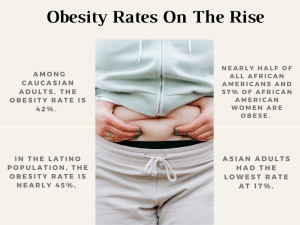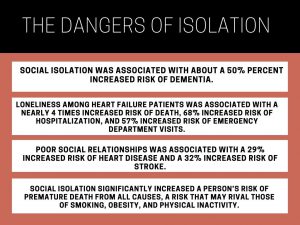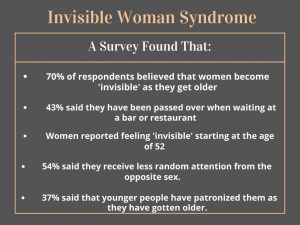Let’s get one thing straight: no members of any generation are blowing all of their money on things like avocado toast. That is the laughable claim that some in older generations have made about Millennials to explain why members of the younger generation haven’t been able to build wealth the way Baby Boomers (or even Gen Xers) have. And while it is true that Millennials, as a group, are struggling to keep up when it comes to saving, making it into a blame game is not helpful.
We tend to have a problem in this country with blaming individuals – or even whole groups – for their financial struggles But it would be more helpful for us to examine what’s actually going on, so we can get to the heart of the matter. So how much are Millennials falling behind, what’s driving the generational wealth gap, and is there any way for the younger generation to catch up?
Generational Wealth by the Numbers

So who are we talking about when we talk about the groups known as Millennials, Gen Xers, and Baby Boomers? The Federal Reserve defines Millennials as those who were born between 1981 and 1996 (turning ages 26 to 41 in 2022), Gen Xers were born between 1965 and 1980 (turning 42 to 57 in 2022), and Boomers are those born between 1946 and 1964 (turning ages 58 to 76 in 2020).
And while Boomers were the largest adult population in the U.S. for a long time, Millennials have now surpassed Baby Boomers as the nation’s largest living adult generation, according to population estimates from the U.S. Census Bureau. As of July 1, 2019 (the latest date for which population estimates are available), Millennials numbered 72.1 million, and Boomers numbered 71.6 million. Generation X numbered 65.2 million and is projected to pass the Boomers in population by 2028.
That means that, with around 56 million of them in the workforce, Millennials are the largest working population in this country. By comparison, there are 41 million boomers in the workforce. But despite there being so many of them, this generation holds just 4.6%, or $5.19 trillion, of US wealth, Bloomberg reported, citing recent Federal Reserve data. Boomers are 10 times wealthier than Millennials, holding 53.2%, or $59.96 trillion, of US wealth. That’s also twice the $28.5 trillion of US wealth that Gen X holds.
That’s a huge disparity, and it doesn’t stop there. Just check out these numbers:
- In 2021, the average net worth in an American household aged 64-75 reached over $1.2m, while the average household under 35 had a net worth of just $76k.
- The average 64-75-year-old American is 94% wealthier than the average 35-year-old.
- Millennials are 24% behind Generation X in terms of wealth accumulated.
- It was recently revealed that Mark Zuckerberg, who has an estimated net worth of $97 billion, single-handedly owns 2% of all Millennial wealth.
- The value of the total real estate owned by Baby Boomers is worth $14.87 trillion. The real estate owned by Millennials is worth a quarter of that at $3.79 trillion.
Those numbers are pretty depressing for young people, but is the issue merely that they haven’t yet had enough time in the workforce to amass the wealth they need to make them more financially secure?
Do Millennials Just Need More Time?
Yes, this wealth gap is partially explained by the fact that boomers are older, so they’ve had more time to accumulate wealth, and that many Millennials haven’t yet reached their peak earning years, with some of the youngest still earning entry-level salaries. But, unfortunately, that can’t be the only issue at play: historical trends tell us that the wealth gap shouldn’t be this big.
Consider this:
- A recent MagnifyMoney study found the wealth gap between generations in the US has nearly doubled in the past 20 years.
- When Boomers were Millennials’ age in 1989, they held 21.3% of US wealth. That’s four times the 4.6% that millennials hold today.
- In 1998, the American population under 40 years old held 13.1% of America’s total wealth. Today, those under 40 hold only 6% of the total wealth. This means that Millennials and Gen Xers own less than half of the wealth that older generations owned when they were the same age.
- Also in 1998, the average household aged 20 to 35 had a net worth of $103,400, while households aged 52 to 70 had a net worth of $747,600, MagnifyMoney found, roughly seven times more than the younger households. That means the wealth gap between older households and younger households has nearly doubled in the past 20 years, climbing from seven to twelve times the net worth.
- The average Baby Boomer had a wealth of $132,960 in their 30s, more than double the wealth of Millennials around the same age.
- A report by think tank New America found that Millennials earn 20% less than Boomers did at their age.
It’s important to stop here and note that all of the numbers we’ve been talking about here relate to the “typical Millennial,” but there are some worrying disparities between different groups of Millennials. For example, the typical Millennial without a college degree has 19% less family wealth than what previous generations without a degree had when they were the same age. Compare that to Millennials who graduated from college, who have just 4% less wealth than their similarly educated equivalents in generations past had, and it looks like working class Millennials have a lot less upward mobility than they did in previous generations.
But even more disturbing is data on African American Millennials. The wealth disparity is shocking: the typical white Millennial family has about $88,000 in wealth, but the typical African American Millennial family has only about $5,000 in wealth. And while white millennials trail the wealth of previous generations of white Americans by only 5%, African American Millennials trail previous generations of African Americans by 52%.
These numbers are a lot to digest, and show that we’re not just talking about a few people being bad with money. So what’s really going on?
What’s Behind the Wealth Gap
The last point above that Millennials earn less than Boomers did at their age is obviously one piece of the puzzle, but there’s more going on. The numbers above are about net worth, which takes into account someone’s personal assets minus all their liabilities – in other words, debt plays a part in those numbers. And that’s a huge part of the problem: Millennials have more debt than any other age group. According to a report earlier this year by Merrill Lynch Wealth Management, 81% of households with people ages 18 to 34 have a collective debt of $2 trillion, including student-loan and credit card debt.
And that’s what seems to be dragging Millennials down: student-loan debt. College tuition has more than doubled since the 1980s, which has fueled a huge increase in student-loan debt. Now, the national student-loan debt total is more than $1.5 trillion, with the average student-loan debt per graduating student (as of 2018) who took out loans sitting at $29,800.

But Millennials are struggling in the asset department, too – specifically, when it comes to owning real estate. Housing costs have been steadily rising; in fact, according to Student Loan Hero, first-time homebuyers today will pay 39% more than first-time homebuyers did nearly 40 years ago, so many Millennials are unwilling or unable to buy a home and add to their assets.
Not only that, but inflation is skyrocketing, meaning prices aren’t just going up for tuition and houses – but wages have remained basically stagnant for decades. According to Pew Research, the “median usual weekly earnings rose from $232 in the first quarter of 1979 (when the data series began) to $879 in the second quarter of this year, which might sound like a lot. But in real, inflation-adjusted terms, the median has barely budged over that period: That $232 in 1979 had the same purchasing power as $840 in today’s dollars.”
As the final part of this perfect financial storm, Millennials were also entering the workforce at just the wrong time, on the tail end of the Great Recession of 2008. It hit millennials born in the 1980s especially hard, making it hard for them to save, gain assets, and stay out of debt. In fact, according to a report by the St. Louis Fed, Millennials’ wealth levels are 34% below where they would most likely have been if the financial crisis hadn’t occurred.
These are all worrying trends, and so far, experts aren’t quite sure what the future holds for Millennials. Fortunately, more recent numbers are starting to look a little better for Millennials, and there’s some talk of them playing at least a little bit of catch-up – but only certain groups of them – others are still struggling. We need programs that can help all Americans save money and get out of debt, such as student loan forgiveness, so don’t forget to call your Congress people if these are issues that are important to you!
For now, if you’re a member of this generation, know that, yes, there are certain things that have been stacked against you, and we know that you’re not blowing all your money on brunch!














 Fast food can even trigger the pleasure centers of the brain to release dopamine, the same chemical that fuels addictions, so you might end up needing more and more fast food to feed your cravings.
Fast food can even trigger the pleasure centers of the brain to release dopamine, the same chemical that fuels addictions, so you might end up needing more and more fast food to feed your cravings. 
